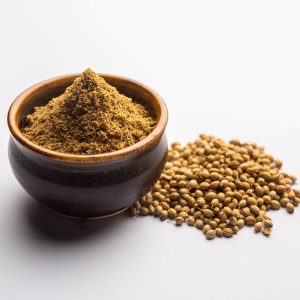The Health Benefits of Herbs

Is it not astounding how something used exclusively for medicine is now a part of our daily diet? Different types of herbs have been used for healing since times unknown. But what is it that makes some herbs a must-to-have in your kitchen?
Apart from bulking up on Vitamin A, C, and K, the secret of herbs’ healing power lies in protective polyphenols. Protective polyphenols have antioxidant, anti-microbial, and anti-inflammatory properties. And it is because of the polyphenols that herbs put up a good fight against carcinogenic cells and other ailments.
Herbs, Cooking, and Seasoning
Turn back a few pages of history, and you’ll find people using various herbs to make tea, smoke, and apply on cuts and bruises. But today, we see a very different use to these.
When you can amp up the aroma of food, give it an aesthetic appeal, and meet health halfway, then why not?
Most of the use for herbs today revolves around cooking, seasoning, and healing like Green Elephant Kratom. It is either the naturally rich flavor that allows you to cut down on salt or don’t fancy monotonous tastes. Still, herbs always find a way to your kitchen.
And that’s that! Now let’s get into what herbs are an utter must-to-have while cooking and why.
Cinnamon
What used to be served only to the king’s says a lot about cinnamon’s importance in health. As science grows advanced, many health benefits of cinnamon believed by people are now proven. However, it is now to be found at a fairly cheap rate at any grocery shop.
Peeled out from the inner bark of a Cinnamomum tree, cinnamon provides a savory and spicy flavor. Adding even more to the cart, cinnamon reduces the insulin resistance of your body to boost metabolism and regulate blood sugar. And it comes as no surprise why it has been used for centuries to cure Diabetes and several heart-related-conditions.
Rosemary
If you want something to plant on the windowsill of your kitchen, then it may never get better than Rosemary. It is an evergreen herb giving out a refreshing fragrance to give a welcoming feel to your kitchen.
But the scent and ease of plantation are not why you’re here. Rosemary’s medical uses come second to none as it is a good source of Vitamin B-6, Calcium, and Iron. Rosemary is a member of the mint family and is effective to boost concentration and reduce inflammation. However, the more highlighted use of Rosemary is for boosting metabolism and improving digestion.
Peppermint
You’ve seen it on a pack of gums, and you’ve seen it on a tea menu. And that’s exactly how versatile the use of peppermint is. Peppermint is a genetic genetically engineered version of spearmint, but it packs all the goods!
Peppermint is rich in essential oils, which gives it the aromatic scent and minty flavor. However, various studies prove that peppermint eases digestion, relieves headaches, freshen your breath, can relieve clogged sinuses, and even relieve menstrual cramps.
If such good reasons are not enough to plant some of these in an egg-tray to keep in your kitchen, I don’t know what is!
Basil
Over one of the oldest herbs to humankind, Basil leaves hold a prestigious value in eastern cultures. From being offered to gods, to not allowed to chew on its leaves, the royalty of Basil is only matched by its medicinal properties.
Basil comes in a variety of types, but all pack rich in the essential oils and polyphenols. It can be made into a nutritious paste to apply over skin to repent acne or brewed tea for headaches. But that’s not where the list of benefits for Basil ends. Basil can ease digestive problems, boost metabolism, improve blood circulation, and even fight stress and anxiety.
Ginger
Not normally what you on a list of herbs, but ginger is (the root part) of a flowering plant. It is native to Southern Asia and has made a name for itself in many kitchens worldwide.
Ginger gets its specialty from being rich in essential oils, especially gingerol. Gingerol is what gives this herb its distinct taste and fragrance.
Although it’s consistent on the menus for people looking to cut down on weight, it offers a wide array of other benefits as well. Ginger extracts, in the form of oil or powder, are a perfect fix for nausea, headaches, and seasonal cases of flu.
Kratom
Though it may see criticism over qualifying as a herb because it comes from a tree’s leaves, White Maeng Da Kratom sourced through kratom krush marks its place in herbal remedies. Unlike the previous mentions, Kratom is a rather recently discovered herb in Southern Asia.
But its popularity has gained momentum in even such a short time. Thanks to the many health benefits, it is really hard to make up a list of herbs and miss this one out. The effects of it can be mildly stimulative and mildly sedative, depending on the dosage. In which case, Kratom is known best for its pain relief and relaxing properties.






